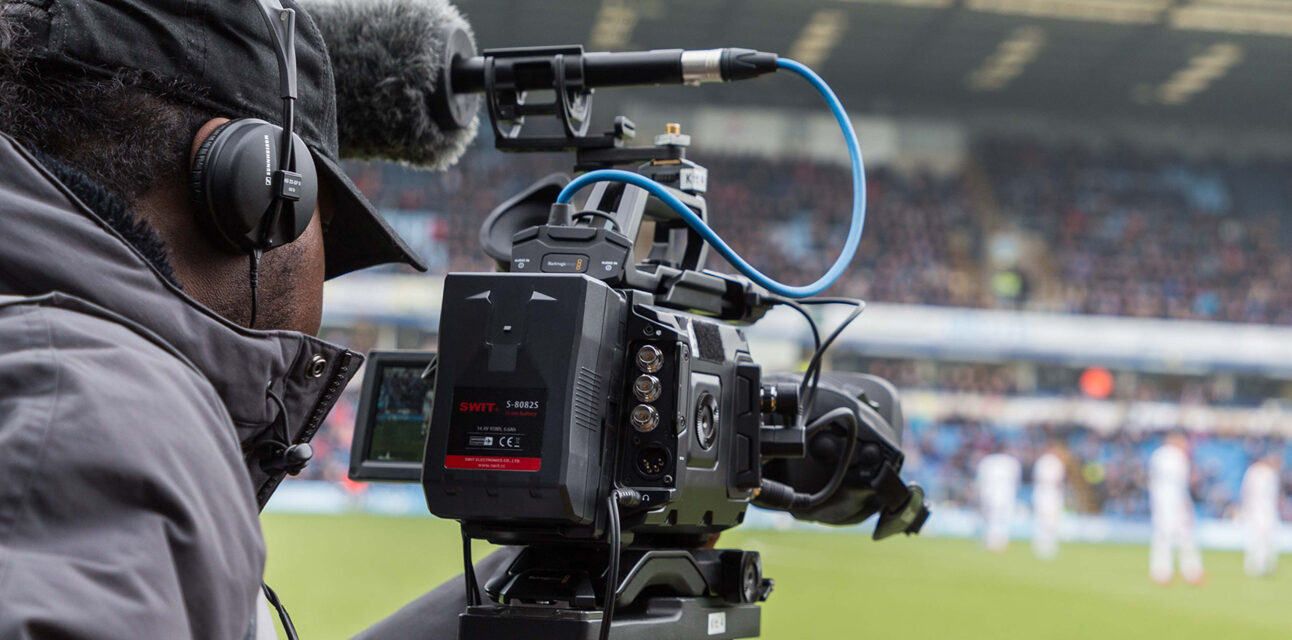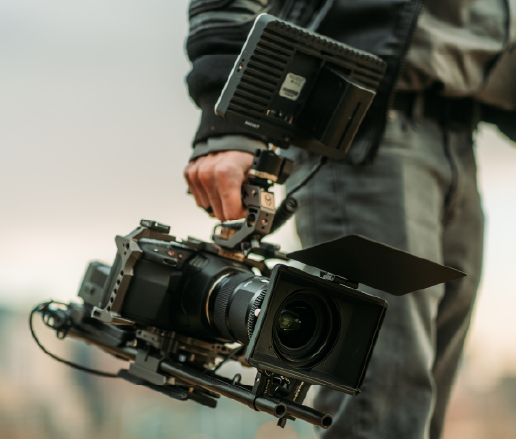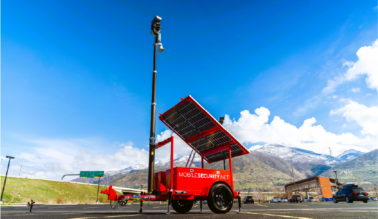How cellular connectivity is transforming media and entertainment broadcasting
by Nir Elron
Like many other industries, media and entertainment is changing due to evolving telecommunication technologies. The mobile revolution not only had an impact on how people watch video content, but transformed the way this content is created and broadcast.
In recent years live broadcasting has undergone a technological transformation, shifting from predominant wired and satellite-based connection to cellular 4G, 5G and even 5.5G. Connectivity development was also a major driver in changing the production workflow process: instead of deploying a whole production team and equipment to a site, the broadcasting companies can now use a Remote Integration Model (REMI) that allows them to send only a camera operator or a skeleton production team to the remote location and feed live camera signal to a central technical facility for further production.
Cellular bonding technology that combined two or more cellular connections to provide better stability and more bandwidth became more common in the last decade. By 2022, most American regional TV stations said bonded cellular was used for about 80% of their news coverage. This growing adoption of cellular technology aligns with the overall tectonic shift in broadcasting from nationwide TV networks to all kinds of streaming platforms, with more consumers today paying for streaming services than for cable or satellite subscriptions.
Reasons to go cellular
There are plenty of benefits that cellular connectivity offers in comparison to more traditional satellite or fiber connected scenarios.
First, it makes deployments much simpler: setup and teardown of equipment are quicker, there are no limitations of cables, be it additional weight or non-sufficient mobility. Cables are not a minor inconvenience: while a 60,000-seat stadium may have over 1000 kilometers of networking cabling, there can be easily more than 70 kilometers of temporary fiber cabling laid for a sport event.
Second, it requires less personnel and equipment. There’s neither large on-site production crews nor huge amounts of cabling. Instead of an outside broadcasting (OB) truck it is often enough to have a cellular backpack. Besides, not being restricted by cables, cameras can move around venues, which means less cameras would be needed to get all necessary angles. All this significantly reduces costs, and allows to use existing resources more efficiently, covering more events.
Third, in certain cases devices that use cellular connection provide better flexibility while capturing live events outdoors. It’s hard to imagine a satellite OB truck following cars in a police chase or boats, so cellular connectivity remains the only option for covering certain kind of tournaments, news or live reality shows.
But even though great advances have been made in terms of connectivity, live coverage of sport events or breaking news can be challenging. There are several typical problems that still affect broadcasting: high latency, poor coverage and insufficient bandwidth.
Latency
Latency is the most critical criterion for live broadcasting, since it basically can ruin any watching experience, especially in the case of sport tournaments. High latency is common for satellite connections, that is why reporters are trained to take a pause before answering questions the news anchor asks.
Cellular networks have lower latency than satellite-based networks, and with each new generation of cellular technology it gets reduced. However, production, remote in particular, can add further latency when switching between multiple live feeds, mixing in commentator audio and video, or adding graphics. Connectivity provider’s core network architecture also has a major impact, for delay depends on the way that data needs to travel before it gets to its destination.
Coverage
Covering events in rural locations and areas with no fixed communication, as well as moving sports like skiing, rallies or marathons is a challenge. A few years ago, the usual option in that case would have been a satellite OB truck, which is able to provide connectivity in remote locations, albeit expensive and with high latency.
As telecommunication technologies evolved, the omnipresent cellular networks became a viable alternative for broadcast production teams. Cellular connectivity is extremely global, covering almost every spot on every continent. Moreover, there are several networks that overlap in every region, so broadcasting doesn’t rely on a single network. And yet using equipment with multiple SIMs requires contracting with several providers, while relying on roaming in some cases may increase latency.
Bandwidth
At every major sport event, concert, or basically any site that breaking news is broadcasted from there is a crowd of people. Most likely they’re using their phones, so cellular towers nearby are swamped with cell phone data. It can seriously affect other devices using the same network – there are stories of autonomous taxis having issues with connection while driving next to a music festival site. But in the case of broadcasting, it’s uplink that is more important: many people do personal video streaming or send pictures, also using the uplink and potentially causing congestion.
Live video streaming requires a significant amount of bandwidth, especially for high-definition (HD) or ultra-high-definition (UHD) content. To ensure high-quality video streams without the limitation of a single network connection broadcasting companies often use cellular bonding solutions that combine multiple network connections. 5G capabilities can further enhance stability and speed of these solutions. And yet, to guarantee a robust and reliable connection they would depend on a cellular connectivity provider. Besides, broadcasting companies may need more flexible IoT data packages and additional connectivity management options.

Webbing’s Solution
Webbing offers a connectivity solution that ensures global access to reliable and high-quality internet, with low latency and the best of class coverage. It provides secure and continuous internet connection for devices on the move, wherever they need it.
Webbing’s partner network of over 600 mobile operators worldwide guarantees global coverage. It allows to roam on several carriers’ network in every region, solving the problem of weak spots that any mobile network may have and ensuring full coverage and continuous connectivity for broadcasting production teams even at remote locations.
A distributed core network with local breakouts, multiple network solution, and data server redundancy helps Webbing provide stable connection, high data throughput and low latency to all roaming devices. It also ensures consistent bandwidth and a reliable connection for field units that use cellular bonding technology, allowing for flawless 5G 4K HEVC live streaming and remote production.
Our eSIM solution ensures failover connectivity with the capability of using multiple mobile carrier profiles, easily changing carriers at any time with zero integration, and an option to fall back from a failing profile to a different profile without any need to communicate with a remote server or deal with multiple SIM cards.
A flexible approach to data packages allows us to tailor our connectivity offering for every customer based on the type of connected devices and their data consumption needs as well as the locations where the devices are used, aiming at overall optimization of the total cost of operations for the client.
Our solutions help enterprises overcome their connectivity problems and optimize costs for global deployments, providing the benefits of roaming with multiple carrier options in every country, and seamless transition between carriers, while maintaining low rates and low latency on a global scale with a single SIM.
Reach out to [email protected] to learn more about Webbing’s solutions.




